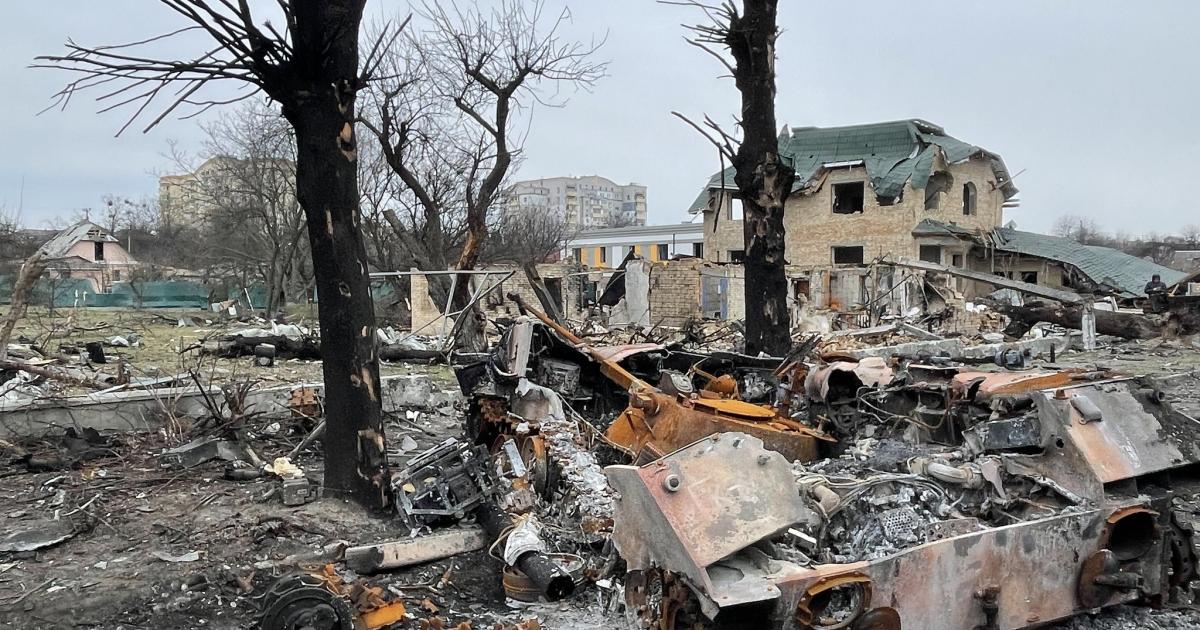
But higher intensity fires have been seen country-wide, as foresters, fire crews and equipment have been mobilised or reassigned to cities, slowing down response times, the report says. Fire suppression by air has also been reduced and about a third (38%) of Ukraine’s 4,216 fire trucks damaged.
Strikes on Ukraine’s energy infrastructure including fossil fuel depots and the Nord Stream pipeline are also a significant cause of emissions.
The destruction of the latter resulted in a week-long undersea eruption of methane with a climate impact equivalent to as much as 14 MtCO2e, while a months-long uncontrolled fire on a Black Sea drilling platform is thought to have burned up more than 150 million cubic metres of natural gas.
At least 15 Ukrainian oil-related storage facilities suffered large fires, contributing to an estimated 1.1 MtCO2e in emissions, while gas networks suffered at least 277 hits.
The report authors noted an unusual impact from the single most powerful greenhouse gas, sulphur hexafluoride or SF6, which has escaped in unusually high amounts during the conflict. Used to insulate electrical switchgear, it has nearly 23,000 more heating potential than carbon dioxide.
Some 40 tonnes of SF6, equivalent to about a million tonnes of CO2,, are thought to have escaped after over 1,000 Russian strikes damaged around half of Ukraine’s high-voltage network facilities, they found.
Indirect emissions
Meanwhile, diverted flight routes above some 18 million km2 of Ukrainian and Russian airspace has added hours to journeys between Europe and Asia that consume additional fuel. Virgin Atlantic stopped flights from London to Hong Kong after almost 30 years, citing the detour, while Finnair and SAS have closed or reduced flights. The net emissions are thought to total just over 24 MtCO2.
Fortifications in Ukraine and European rearmament is also driving demand for explosives, steel and other carbon-intensive materials.
Total global military expenditure reached $2.4 trillion in 2023, increasing by 6.8% in real terms since 2022, the steepest year-on-year increase since 2009. Besides production, long-distance deliveries of heavy arms contributes to the emissions generated.
The Ukrainian government welcomed the report, saying it will contribute to a compensation case against Russia. In 2022, the UN General Assembly voted in favour of a resolution making Moscow responsible for compensating Ukraine for the war, and the Council of Europe has established a registry of damage, including climate emissions. Frozen Russian assets could be used to settle the costs.
Ruslan Strilets, Ukraine’s minister of environmental protection and natural resources said: “Ukraine today is the epicenter of Russia’s environmental terror. Nevertheless, we are keeping up with the times and are actively involved in finding global solutions.
“Amid the war, Ukraine has been an active participant in the UN climate summit. We have opened a Climate Office and approved a climate policy strategy until 2035. We are waiting for the Verkhovna Rada (Parliament) of Ukraine to approve the main climate law,” he added.
The country is also planning to launch an emissions trading system and to join the EU’s Carbon Border Adjustment Mechanism, he said.
- SEO Powered Content & PR Distribution. Get Amplified Today.
- PlatoData.Network Vertical Generative Ai. Empower Yourself. Access Here.
- PlatoAiStream. Web3 Intelligence. Knowledge Amplified. Access Here.
- PlatoESG. Carbon, CleanTech, Energy, Environment, Solar, Waste Management. Access Here.
- PlatoHealth. Biotech and Clinical Trials Intelligence. Access Here.
- Source: https://theecologist.org/2024/jun/14/conflict-carbon-could-cost-russia-billions-reparations
